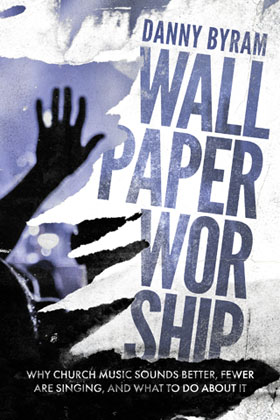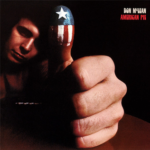loading...

by Danny Byram | Feb 28, 2020 | christian worship, church, Church Leadership, Leadership, Music & Songwriting, pastor, wallpaper worship, Worship, worship songs, worshipleader, worshipmusic

If you’re thinking “Oh brother! Here we go…another legalistic churchy rule,” stay with me. It’s not. Let’s level the field: if you’re using pop songs in worship, I do not universally condemn it.
When I was on a large church staff with a wide talent pool, I used to perform pop songs periodically and really enjoyed it. It was a thrill to connect a lyrical parallel in a popular song with a sermon and to make the song sound like the recording performed live.
IT CAN WORK
One of my most effective experiences was when our pastor gave a sermon on “God wants you to join Him in His dance.” He used a clip from the Tom Hanks’ 1999 prison movie The Green Mile, in which the condemned prisoner, who happens to be innocent, has eaten his last meal before being executed and is watching his last movie, a 1930s classic with Fred Astaire and Ginger Rogers (For Those of You With No Connection to the Past, acronym FTYWNCP, Fred & Ginger were an acting/dance team that killed it in the ballroom style). The song they danced to, in the scene the prisoner watches, is “Dancing Cheek To Cheek.” (FTYWNCP, check it out on YouTube.) Watching Fred and Ginger, the prisoner says in tears, “This must be heaven. They look like angels…”
Our church’s tradition was to end each sermon with communion while the band played as people went through the line for the elements. For communion music that day we played “Dancing Cheek To Cheek.” People were in tears as they connected the sermon with communion through the song. God was inviting them to “dance with Him” and they did.
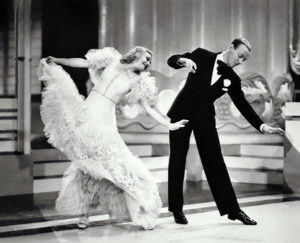
SO, IS THERE A PROBLEM?
Consider: We, in the worship music industry, have become so good at live performance (the American church spends $2 billion/year of its budgets on music/theatrical production gear) that often we perform pop songs “just because we know how.” Someone shared with me about a Nirvana song that opened a service at a megachurch. I asked, “Was it related to the sermon or service theme?” “Not that I saw or heard,” he responded. “It was just really cool.”
I have heard and seen performances in worship services of songs by Aerosmith, Justin Timberlake, Beyonce and others that are done – a) because the band knows how to and wanted to – b) to invite the unbeliever into an atmosphere that is familiar and non-threatening.
Do we really play to so many un-believers in our local worship service that we feel setting the atmosphere at their level of understanding achieves a worthy goal? If the purpose is to win them to the Gospel, is it working?
Gallup Research conducted a study of churches county by county in the USA, to find out what large and small churches spend ($) to pull off weekend worship services, and the result thereof. The study took into account building/venue costs, salaries of those who are required to execute the weekend productions (pastors, associates, musicians, crew, teachers), printed materials given away, licensing fees for use of song copyrights (CCLI), coffee bars and other related expenses. Add the $2B/year of gear purchased from production retailers. Divide those numbers by how many individuals the churches report who make life-changing commitments to the Gospel as a result of the weekend productions. Gallup’s results are that it costs the church over $1 million to convert one non-believer. If we presented this financial idea on TVs Shark Tank, the investors would pass.

THE IDEA HERE IS NOT TO SHAME US, BUT TO AWAKEN US.
Jesus’ words can guide us as we make decisions on how to musically shepherd our “audience” (aka Jesus’ sheep): “I know my sheep and they know me and hear my voice, just as my Father knows me and I know the Father. My sheep will not listen to a hired hand. A hired hand will abandon the sheep because they don’t belong to him; he runs away because he’s working only for the money and doesn’t really care about the sheep.” John 10
Why spend our time in service-planning and rehearsals to perform a song that has nothing to do with a sermon or a scriptural theme – because we want to be approved of by people who don’t know the Savior we are trying to “sell” them? What about the sheep of the Shepherd, our congregants – who come to weekend services for spiritual renewal, refreshment and teaching of the word of God? Do unrelatable pop songs – which they hear every day anyway – help meet their needs?
Francis Chan, in his book Letters To The Church said: “People are either awed by the sacred or they are not. We (leaders) have addicted our people to less.”
I quit using pop songs simply because my time leading His sheep is limited, both in the allotted weekend time and in how many weekends I have left on this planet. I choose to play to the sheep and their needs. Non-believers are welcome to come along as the Holy Spirit draws them.
I welcome your comments below. What’s your experience?
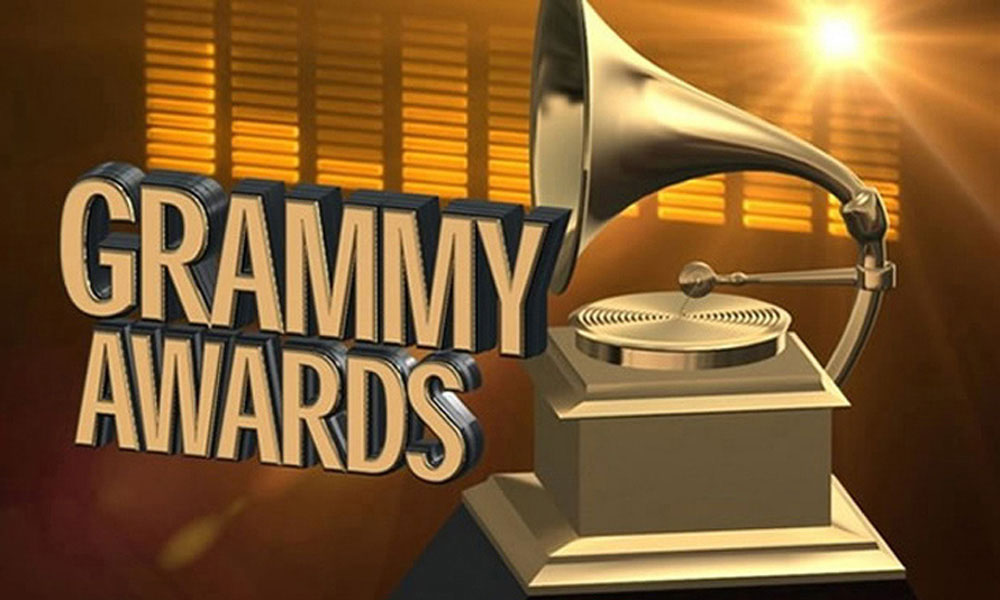
by Danny Byram | Jan 27, 2020 | christian worship, christianmusic, church, Church Leadership, Contemporary, Leadership, Music & Songwriting, pastor, praise, wallpaper worship, Worship, worship songs, worshipleader, worshipmusic
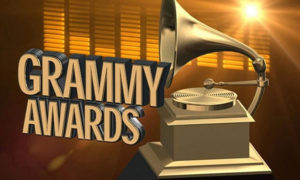
The word worship has metamorphosed. It is one of those many words floating around that once had specific meaning but has culturally morphed into new relevance. Other examples: thread, stream, post – you get the idea.
Worship used to be primarily a verb – something we did corporately or privately when we gather into a house of worship. Now it is also a noun, a traded commodity, a multi-billion-dollar industry tied to the entertainment and production-gear retail world, akin to the latest talent reality shows, playing to millions of unnamed, anonymous online fans of worship songs and worship artists. Worship has become its own style of music.
Am I cynical or a realist? Probably both. Before you go off on me with this, first consider the reactions I frequently hear from semi-professional church musicians. They cringe at playing a hymn or any music piece outside the worship model. Yet, many equally cringe with many new songs they are required to memorize. Why the cringing? Musicians will confess – quietly, behind the scenes – the musicality of worship lacks in diversity or musical creativity. In other words, if they are honest, musicians will tell you that as a style of music, worship becomes quickly rote and predictable.

Example: I had to learn the latest 12-15 most popular worship songs for an upcoming conference. I found each song on YouTube and began my rehearsal. Most start with a low synth pad sound, covered in a breathy vocal line. Then follows the rhythmic groove with guitar, bass and drums. Each track has a simple riff (ie, a basic scale pattern meant to be a musical hook played by a lead guitar or piano). Many of these riffs are so similar, it’s difficult to discern which song I am in when I hear it. They are purposely simple so they can be reproduced by volunteer musicians possessing basic skill levels; I get it.
By the middle of the songs, vocalists are full voice, the band is playing the 1-4-6-5 chord progression (or 1-5-6-4, 1-6-5-4 or another variation). There is a full synth pad or guitar distortion pedal sound underlying everything to give a pop power-ballad sound. Eventually most songs will end as they start, finally capped with a cymbal-swell cadence, giving the audience their cue to applaud.
There you have it. Worship is a musical style, a specific sound. To use music outside this model in worship, or an original arrangement of a current song, risks being pegged as out of touch or old school. It assumes congregants will not accept anything other than “the way it sounds on the radio.” Flash: not all congregants listen to “worship radio” which may be why so many simply squint and stare during music segments.

It amazes me how many styles of music are out there, being enjoyed, EXCEPT in church. Watch the Grammy Awards or the Academy Awards show and count how many styles of music are used in these productions: acoustic, jazz, classical, choral, gospel, country, folk, hip hop, alternative, Broadway. There are so many great choices to enjoy, except in worship.
Recently I had a short-lived conversation with a leader of one of the big worship companies (I won’t name the company because you’d know them). I asked him, “What if an oboe or clarinet player came up to you in church and asked how he/she could fit into the worship ministry – what would you say?” His response: “I have no idea.”
“A garden’s beauty never lies in one flower.”
― Matshona Dhliwayo
I am dying to hear comments from anyone experiencing musical creativity in sound, style and execution in your worship services. Are you out there?

by Danny Byram | Oct 30, 2019 | christianmusic, church, Church Leadership, Contemporary, Liturgical, Music & Songwriting, pastor, Traditional, wallpaper worship, Worship, worship songs, worshipleader, worshipmusic

Ever been to a quiet, classy restaurant with your sweetie? White tablecloth – pressed napkins – two candles – rose in a vase. It’s relaxing just imagining it. Your well-dressed waiter appears and gives you the evening’s specials from memory. After taking your wine order, he leaves to allow you to choose your evening meal. You two are taking in the atmosphere: Low lights – smooth jazz in the background – and staring into the eyes of the only person you want to be with, in this setting.
As you begin your long-awaited conversation, the waiter returns to pour your wine and take your entrée order. He disappears and you continue to talk together, alone. The waiter returns to ask for a clarification, which you politely give. He leaves, your conversation resumes.
The waiter returns to repour your water glasses and asks how the wine tastes. You give him a positive nod. He then puts down his water pitcher, pulls up a chair and begins to explain the differences between California wine and Italian wine. He leaves again. You try to resume your conversation only to be interrupted again by the waiter serving the appetizers. He then gives you a full description of where the pigs, used in your bacon-wrapped appetizer, were raised and fed. He leaves. You try to remember where you left your conversation, only to be interrupted again by the delivery of your entrees. This time the waiter doesn’t leave. He sits in the chair he previously pulled up, watches you eat, and gives you factual information of how the chef prepared your meal.
The point of your evening is lost. The interruptions have broken the intimate conversation you came to enjoy.
Worship can be like that.
On Sunday, at church, the musicians have chosen a great set of songs. They tastefully lead you, the worshiper, to a place of intimacy, devotion, and readiness to receive something spiritual. You are poised. You are ready. Like the soft jazz in the restaurant, the keyboardist is padding quietly.
Suddenly, the associate pastor jumps on the stage: “Everybody having a good time? Hey! How many of you have signed up for the All-Church Retreat? Lemme see the hands. Woo-hoo! Also, we need more workers in the nursery. It’s a great way of serving and you’ll be blessed. Sign up in the lobby. And for anyone who’s into communion, make sure you grab a wafer pak in the baskets by the doors at some point during the service. Now give someone a HIGH FIVE!”
I call this WORSHIP INTERRUPTUS. It happens too often.
Back to the restaurant: You came to have a meaningful, intimate experience with the love of your life – only to have it shanghaied by an obnoxious waiter.
Back to the church: You came to have a meaningful, intimate experience with the Love Of Your Life (Jesus Christ), only to have it shanghaied by a leader who fails to understand the importance of FLOW OF SERVICE, PLATFORM ETIQUETTE, INTIMACY VERSUS INTERRUPTUS.
When we as platform leaders take our people to a vertical point in time – a moment of spiritual readiness – and then immediately reverse that moment, we jerk our congregants from vertical to horizontal – from heaven to earth – from God to one another – from one another to an annoying “waiter” on the platform.
This isn’t rocket science. Yet, its frequency is disturbing.
The Apostle Paul admonishes his confused congregants and frustrated leaders at the church in Corinth: “All things should be done decently and in order.” (I Corinthians 14:40) King Solomon understood the bigger picture: “There is a time to weep and a time to dance; a time to keep silent and a time to speak.”
“Oh, I know,” church leaders say. “Where to put the announcements is a constant struggle.” There are many solutions to this problem and one size does not fit all. But wherever we put announcements, we must not lose sight of the larger purpose of our gathering: to lead the sheep to the living water, so they can actually drink it.
“For everything there is a season, a time for every activity under heaven.” Ecclesiastes 3

by Danny Byram | Jun 4, 2019 | christian worship, christianmusic, Church Leadership, Contemporary, Leadership, Music & Songwriting, pastor, wallpaper worship, Worship, worship songs, worshipleader, worshipmusic

The church in America is in a cycle of prosperity. Impressive church venues are everywhere. Millions of dollars are spent to remodel sanctuaries, build new ones, purchase gear, keep up the latest trends in stage production – live video capturing – and worship song-set automation software. Yet, many who attend services find themselves standing in silence, watching screens, and observing performers on a platform. I call this lack of congregational engagement Wallpaper Worship.
In his endorsement of my book, author Philip Yancey says: “In my lifetime worship has changed from something we do before an audience of God to something a few semi-professionals do for an audience of us.”
C.S. Lewis recognized this problem over 70 years ago: “The perfect church service would be the one we were almost unaware of. Our attention would have been on God. But every novelty prevents this.”
WORSHIP LEADERS: “SOMETHING’S WRONG, BUT WE DON’T KNOW WHAT IT IS.”

In my work with worship leaders across the country, I hear from good-hearted, talented church musicians: “Something is wrong, but we don’t know what it is.”
Let’s consider… The “worship industry” is now a multi-billion-dollar segment of the music and entertainment industry. The American church market purchases over $1.5 billion a year of production gear from audio and video retailers (Music Trades magazine, February 2019). Worship song-publishing/recording companies produce new songs daily, with videos promoting a singular sound – a monochromatic look – and a homogenized form of leading from the platform.
Is this new? Technologically, yes. Historically, no.
Throughout history, expressions of worship were governed by rules which reduced congregational participation to “stare-at-the-platform-and-listen-to-us.” Priests clad in gorgeous attire with elaborate “worship gear” on sanctuary altars, would perform worship for the people. The problem? (There were many…) Leaders led in Latin which most worshipers didn’t speak or read, and congregational participation was allowed only during the Eucharist. The result? Congregants simply watched and listened. Sound familiar?
Even more concerning was when the church found itself relying on monarchies, dynasties and other secular shareholders to promote its mission. The problem? When the church becomes an industry-driven machine – opposed to a spirit-and-truth-driven organism – its message can become diluted and its mission compromised. The result? The message of human fallenness, repentance, redemption, sacrifice, suffering, and sanctification becomes eclipsed with messages of personal actualization, self-healing, and emotional relief from social, political or personal injustices. Sound familiar?
PASTORS TO WORSHIP LEADERS: “MAKE IT LOOK AND SOUND LIKE THAT!”

Leading music in today’s church, even in small rural settings, can quickly become about mimicking the latest worship-industry wave to attract more sheep. Seems like a worthy idea. However, when the worship industry needs and feeds the church, and the church needs and feeds the worship industry – resulting in passive or even frustrated congregants – then something may indeed be wrong.
Pastors or elders will view YouTube videos of arenas full of worship-music fans, with hands in the air, gathered in front of a stage occupied by music professionals – supported by world-class venue production, pristine sound, eye-candy lighting and smoke – and then dictate to their worship leaders: “Your job is to make our Sunday service look and sound like THAT.” After long hours and spent offerings, often the result is local congregants passively watching screens, silently sitting, or leaving for coffee – feeling performed at by musicians they’ve never seen before in their church.
Worship leaders ask: “What do we do now? Bigger production? More expensive effects? Newer songs? Slicker automation? What more do they want? What’s wrong with THEM?” To find relevant answers, perhaps we should ask different questions:
- Do we even believe something is wrong?
- Regarding local church worship: Does one size fit all?
- Is some corporate industry pushing the idea that ‘one size fits all?’
- If so, who and why?
I do not think there is some sinister plan by the music industry to undermine the church it profits from. However, history clearly reveals the church as vulnerable to being wooed from her mission and message, especially when there are billions of dollars involved.
So what’s the SOLUTION? As shepherds of worshipers, our job is to lead in a language our sheep understand and respond to. The Object of our worship said, “My sheep hear my voice and will not follow a hireling.” (John 10). If worshipers are not following, leaders are responsible. Good shepherds will make adjustments on behalf of their sheep (Ezekiel 34) – laying down their own preferences, agendas, and yes – even their lives.
Does one size fit all? What do you think? Please comment below.
Singer/Songwriter/Speaker/Author DANNY BYRAM has performed on over 100 US military installations worldwide since 1987. His work earned him the name “The Combat Musician” from chaplains and troops. Danny also directed 26 Promise Keepers NFL-Stadium events for men, including the Clergy Conference (the largest gathering of clergy in history), and 36 FamilyLife arena events for couples, working alongside Marantha! Music and Integrity Inc. His book: WALLPAPER WORSHIP: Why Church Music Sounds Better, Fewer Are Singing And What To Do About It is available on Amazon, Christian Book Distributors, and from CLCPublications.com. His music is downloadable through iTunes and Spotify.

by Danny Byram | Sep 24, 2018 | Church Leadership, Leadership, Music & Songwriting, Worship, worshipmusic

I love living in this age of ministry. I wish it had come sooner. In my early Christian/singer/songwriter career in the 1990s, most churches and military chapels where I performed still reflected the church architecture of the 1920s. A piano on one side, organ on the other, 50 choir chairs as a backdrop – you get the picture. We would arrive, and begin moving the chairs, move the piano up on stage, and figure out where to put the heavy wooden pulpit. Then, hunt for a 6-foot folding table and position it on top of the pews where we could mix sound. Finally, we would haul in our sound system. At the time, most church PA (Public Address) systems were designed for talking heads, and guaranteed fidelity akin to AM radio news coming through 3″ speakers in a 1965 Plymouth.
We used to moan and dream about the day when church platforms would be designed for communicating with the tools that the rest of the performing world were using: lighting, screens, and world-class sound. As usual, the church was decades behind. But we’ve caught up! Yay! Today I only have to show up, plug in and play. Oh yeah…and minister the Gospel. But now, with all the gear and gadgets, we can also entertain while we minister truth. How cool. How relevant. How risky. Here’s why…
While entertainment can communicate truth, its greater purpose is to distract, help us forget our pain and temporarily check out of reality. True worship makes us focused, aware, and present in the reality of how much we need God’s grace and mercy. That reality can be hard on us emotionally as we stare into His holiness and have a similar reaction as Isaiah: “I am undone for I am a man of unclean lips and I dwell among a people of unclean lips.” (Isaiah 6:1-5) It is very human to want to skip the emotional challenge of facing His holiness and our un-holiness.
I can already hear some reacting: “Wait! We are more than conquerors – We share the righteousness of Christ – God doesn’t see our sin anymore – He suffered so we wouldn’t have to!” Absolutely correct. Yet the paradox in those truths is we can be incredibly naïve to think the Christian experience is for the purpose of eliminating discomfort, especially how, when or where we are triggered to stumble, even as believers. Paul assured us (2 Corinthians 7:10) that kind of “Isaiah sorrow” is an appropriate response to God’s presence, for that kind of sorrow leads us away from sin’s influence and into His holiness, which transforms us (Isaiah 6:6-7). We don’t need more information. We need more transformation.
True worship leads us away from ourselves, our preferences, our tastes, our story and into His heart, His reality, His preferences, His story. We say we have the greatest life-changing Gospel message the world has ever heard. Yet it takes more gear, better gadgets and shorter sound bites to get people to pay attention. What an interesting age in which we live!
Want entertainment with your Gospel? Fine. It’s available everywhere. Just remember it’s simply a tool to communicate a Gospel that can be uncomfortable yet truly life-changing.
“Let us consider how to stimulate one another to love and good deeds, not forsaking our own assembling together, as is the habit of some, but encouraging one another; and all the more as you see the day drawing near.” Hebrews 10:24-25

by Danny Byram | Jul 27, 2018 | Church Leadership, Music & Songwriting, Worship

Recently an acquaintance in my men’s group, an accomplished guitarist who teaches public school, shared his elation to have passed the “audition process” to play in his church’s worship band. However, he had a look of uncertainty when he shared with me what he was experiencing.
First, he is having to learn to play his instrument through an “in-ear monitor,” an earplug that plays back all the instruments on the platform. In-ears, as we call them, are valuable when there are many musicians trying to hear themselves from open floor monitor speakers. The stage noise gets so loud it interferes with the house mix. In-ears are a good solution, but take some getting used to.
Next, he was having to learn to play to a “click track”, an electronic metronome pumped through his in-ear monitor. These are used when musicians struggle to stay in tempo, traditionally a problem with non-professionals. Instruments begins to conflict and compete, as singers, guitarists and keyboardists tend to rush tempos, while the drummer and bass player are trying to hold tempos at bay. My friend also stated he was forced to mimic a keyboard part, imported through the internet, which was being heard by the congregants through the house mix. Finally, he shared a new requirement coming down: players have to spend their home hours memorizing 5-6 song charts per week, many of which are rarely repeated after the first performance.
Hearing him talk, I was assuming he was in a church that seated 2,000 or more. Not so. His church gathers 200 people weekly.
He came to his church team simply wanting to play music and assist in leading his fellow congregants into a musical worship experience that was warm, meaningful and fun. Instead what he has found was a process rife with anxiety, pressure and perfection. It seemed disconnected from the congregants, disingenuous, and a hassle. He put away his guitar and dutifully took a congregational seat to “let the pros” do it for him. The pros are hired musicians, not involved in his church.
I hear stories like this regularly. Somewhere, someone or some “worship-industry company” came up with the idea that this should be the model for small local-church music. Much of our millennial generation of worshippers know nothing else. As one who has performed for and produced large events, these technical tools can be necessary for helping professionals perform in a way that is more seamless. I get that. But who told these small churches that they are arenas or stadiums? Who told these music worship pastors they have to drive their volunteers into a world of professional gear, technique and prowess for which they are unprepared, nor possess the time to develop? For years, many larger churches have given up on using volunteers and simply hire outside music professionals. The small churches, like my friend’s, are following suit.
The important question: Is all this necessary for congregants to experience God’s presence together?
Worship leaders, who desire to pastor good-hearted, talented volunteers would do well to consider: is what I am doing real or is it rote?
ROTE: “A routine, fixed, habitual, or mechanical course of procedure; proceeding repetitiously, without meaning.”


















